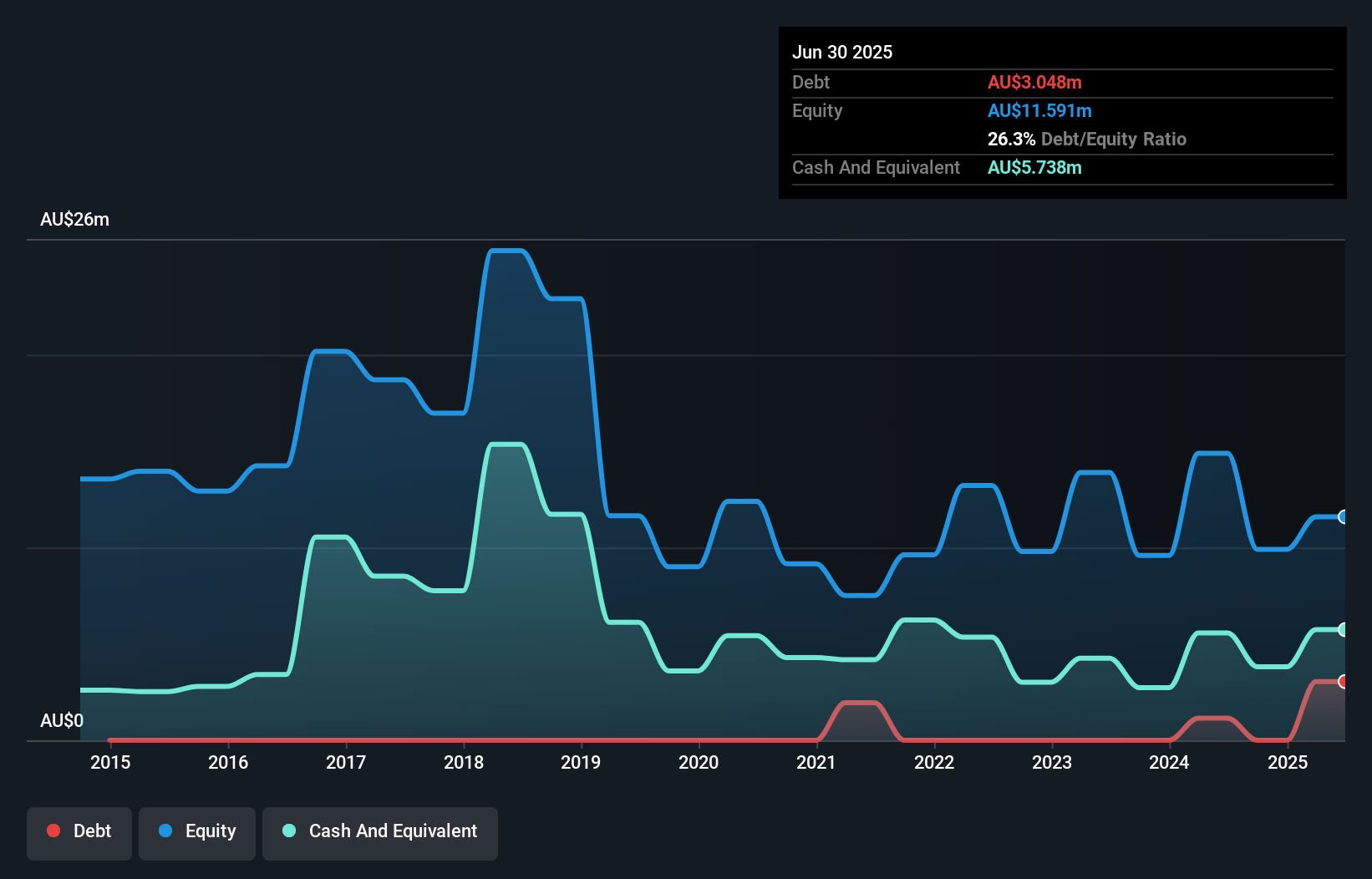Some say volatility, rather than debt, is the best way to think about risk as an investor, but Warren Buffett famously said that 'Volatility is far from synonymous with risk.' So it might be obvious that you need to consider debt, when you think about how risky any given stock is, because too much debt can sink a company. As with many other companies BluGlass Limited (ASX:BLG) makes use of debt. But should shareholders be worried about its use of debt?
Why Does Debt Bring Risk?
Debt assists a business until the business has trouble paying it off, either with new capital or with free cash flow. Ultimately, if the company can't fulfill its legal obligations to repay debt, shareholders could walk away with nothing. However, a more usual (but still expensive) situation is where a company must dilute shareholders at a cheap share price simply to get debt under control. By replacing dilution, though, debt can be an extremely good tool for businesses that need capital to invest in growth at high rates of return. When we think about a company's use of debt, we first look at cash and debt together.
What Is BluGlass's Net Debt?
The image below, which you can click on for greater detail, shows that at June 2025 BluGlass had debt of AU$3.05m, up from AU$1.15m in one year. But on the other hand it also has AU$5.74m in cash, leading to a AU$2.69m net cash position.

How Healthy Is BluGlass' Balance Sheet?
We can see from the most recent balance sheet that BluGlass had liabilities of AU$7.48m falling due within a year, and liabilities of AU$4.86m due beyond that. On the other hand, it had cash of AU$5.74m and AU$7.77m worth of receivables due within a year. So it can boast AU$1.17m more liquid assets than total liabilities.
This short term liquidity is a sign that BluGlass could probably pay off its debt with ease, as its balance sheet is far from stretched. Succinctly put, BluGlass boasts net cash, so it's fair to say it does not have a heavy debt load! There's no doubt that we learn most about debt from the balance sheet. But you can't view debt in total isolation; since BluGlass will need earnings to service that debt. So when considering debt, it's definitely worth looking at the earnings trend. Click here for an interactive snapshot.
See our latest analysis for BluGlass
In the last year BluGlass wasn't profitable at an EBIT level, but managed to grow its revenue by 18%, to AU$5.5m. That rate of growth is a bit slow for our taste, but it takes all types to make a world.
So How Risky Is BluGlass?
Statistically speaking companies that lose money are riskier than those that make money. And in the last year BluGlass had an earnings before interest and tax (EBIT) loss, truth be told. And over the same period it saw negative free cash outflow of AU$8.0m and booked a AU$11m accounting loss. With only AU$2.69m on the balance sheet, it would appear that its going to need to raise capital again soon. Even though its balance sheet seems sufficiently liquid, debt always makes us a little nervous if a company doesn't produce free cash flow regularly. The balance sheet is clearly the area to focus on when you are analysing debt. However, not all investment risk resides within the balance sheet - far from it. For instance, we've identified 6 warning signs for BluGlass (3 can't be ignored) you should be aware of.
Of course, if you're the type of investor who prefers buying stocks without the burden of debt, then don't hesitate to discover our exclusive list of net cash growth stocks, today.
Valuation is complex, but we're here to simplify it.
Discover if BluGlass might be undervalued or overvalued with our detailed analysis, featuring fair value estimates, potential risks, dividends, insider trades, and its financial condition.
Access Free AnalysisHave feedback on this article? Concerned about the content? Get in touch with us directly. Alternatively, email editorial-team (at) simplywallst.com.
This article by Simply Wall St is general in nature. We provide commentary based on historical data and analyst forecasts only using an unbiased methodology and our articles are not intended to be financial advice. It does not constitute a recommendation to buy or sell any stock, and does not take account of your objectives, or your financial situation. We aim to bring you long-term focused analysis driven by fundamental data. Note that our analysis may not factor in the latest price-sensitive company announcements or qualitative material. Simply Wall St has no position in any stocks mentioned.
About ASX:BLG
BluGlass
Provides semiconductor manufacturing technology and devices for biotech, defense, display, and scientific markets in Australia and the United States.
Medium-low risk with mediocre balance sheet.
Market Insights
Community Narratives



